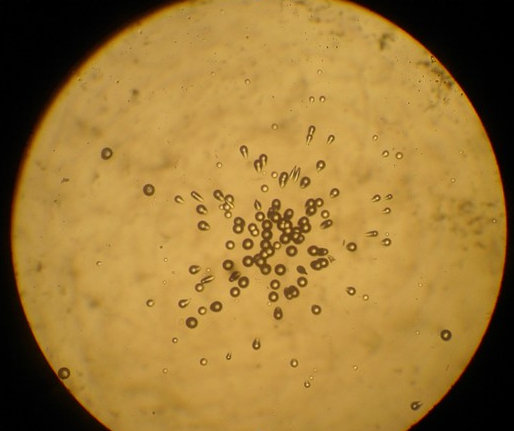Sampling sediment for Plutonium and Uranium particle contamination
A citizen science approach
Against deliberate official ignorance we need to see what particles of uranium and plutonium oxides are present in the marine sediments. We are testing samples and we will publish the findings.
There is ample evidence that tiny inhalable radioactive particles in the environment cause cancer and congenital malformation. All nuclear power stations are licensed to discharge such particles to the atmosphere. The United Nations used to report the quantities, but the latest such report is for 1997.
CR-39 plastic detection is a photomicrographic technique used in radon gas detectors, a cheap though reliable method that can also detect particles of uranium, plutonium and americium, and can discriminate between those elements using advanced software.

This image shows the impact of alpha particles from seven radioactive atoms in a random sample of dust from an air filter from a car on the Welsh coast close to Cardiff. Each of the marks show the damage done to CR-39 plastic by the alpha particle emitted when a single uranium, plutonium or americium atom decayed. The radioactive particles that created these marks on this piece of CR-39 (50mm x 25mm), the size of a microscope slide, were smaller than 5 microns and consisted of billions of individual radioactive atoms.
Some of the particles land in the sea. Those which wash up on shorelines dry out and are known to travel miles inland even in low velocity winds. Official research into inland migration of particles was discontinued decades ago.
The four environment agencies in the UK hold no data on particles in marine sediments
Natural Resources Wales (NRW) and the Davidson Committee in Wales have colluded with Westminster and the nuclear industry by evading the question of whether radioactive particles are present in the mud that NNB/EDF is dredging and dumping in the Severn Estuary. NRW and Davidson's committee have both wrongly claimed that spectrometry is adequate to detect any particles that might be present. NRW failed to require use of the CR-39 technique for testing the mud and has tried to mislead the Senedd's Petitions Committee about its usefulness.
